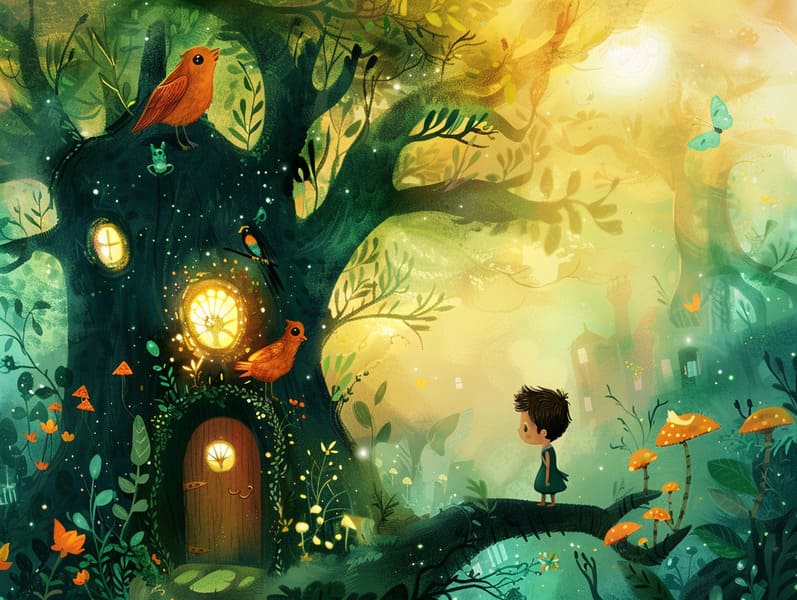Uncovering the Past of Fairy Tales to Read with the Unfading Appeal.
Uncovering the Past of Fairy Tales to Read with the Unfading Appeal.
Blog Article

Traditional fairy tales have legendary status. These tales have been recounted from one generation to the next far before they were ever documented. They were born from a variety of cultures, including American traditions. They were initially transmitted among elders, often carrying themes and messages related to the societal norms and beliefs of the time.
The famous Grimm duo, Jacob and Wilhelm Grimm, were among the first to collect many of these beloved fairy tales. Their volume, "Grimm's Fairy Tales," included narratives like "The Little Glass Slipper," "The Story of Hansel and Gretel," and "Schneewittchen," which have since become hallmarks in the world of classic fairy tales. Similarly, H. C. Andersen's delightful tales, such as "The Sea Maid," and "The Ugly Duckling," have captivated hearts worldwide, guaranteeing their place in the pantheon of timeless fairy tales.
Though they are old, fairy tales remain as meaningful as ever, especially as kids' bedtime tales. These delightful tales are now available in various formats, including richly illustrated books, charming animations, and online storybooks.
Their persistent charm can be credited to several charming aspects:
Important Morals: Traditional fairy tales often illustrate important moral lessons. Stories like "The Story of the Boy Who Cried Wolf" teach the importance of truthfulness, while "The Hare and the Tortoise" underline the traits of tenacity and humbleness. These stories offer young readers clear distinctions between moral and immoral, building their moral compass in a tender yet significant way.
Warmth and Understanding: Fairy tales frequently involve characters facing struggles and tests, prompting children to comprehend with their struggles and back their triumphs. For instance, "The Story of Beauty and the Beast" emphasizes the benefit of seeing inner beauty to understand the true essence of a person, cultivating kindness and knowledge.
Cultural Comprehension: Many classic fairy tales are interwoven with the cultural contexts from which they emerged. Learning from these tales can provide enlightening views into different beliefs, encouraging a sense of world appreciation and appreciation.
Inventiveness and Imagination: The supernatural elements in traditional fairy tales—talking animals—generate children’s creativity. These stories transport readers to mythical realms, unleashing creative thinking and a sense of awe that stays a lifetime.
Classic fairy tales are not classic fairy tales only fantastical but also edifying. They provide captivating tools in cultivating various mind and heart abilities in kids. When timeless fairy tales are recited, they enhance speaking abilities by introducing new linguistic elements and sophisticated sentence structures. This practice also develops hearing perception and attentiveness, as young readers track the narrative, eager to see what happens next.
Furthermore, analyzing the themes and characters of classic fairy tales can sharpen evaluative skills and problem-solving abilities. Little ones learn to identify patterns, predict happenings, and comprehend cause and effect. These discussions also encourage children voice their thoughts and feelings, strengthening their emotional intelligence.
In today’s online age, the prevalence of digital fairy tales has made these tales more within reach than ever. Internet resources and software offer large libraries of Grimm's fairy tales that can be perused or listened through anytime, anywhere. Fairy tales told out loud are particularly liked, making available an interactive way for children to immerse in these bewitching tales. Voice books and read-to-me stories move characters and settings to life, often supported by whimsical sound effects and musical scores that amplify the storytelling experience.
The everlasting appeal of timeless fairy tales lies in their ability to alter to modern times while keeping their key morals. Contemporary revisions of these tales often present more multicultural protagonists and modern settings, making them meaningful to today’s audience. However, the core values of bravery, kindheartedness, and fair play remain unchanged, continuing to move listeners of all ages.
Classic fairy tales also offer a sense of serenity and predictability. They grant a well-structured narrative with a transparent beginning, middle, and end, often coming to a close with the closure of conflicts and the triumph of morality over wickedness. This uniformity can be easing for children, allowing a sense of solidity in an shifting world.
Timeless fairy tales continue to enchant and train new generations, maintaining their loveliness and pertinence in modern society. As bedtime stories for kids, they allow a perfect blend of captivation and insight, backing moral values, empathy, and creativity. The proliferation of online fairy tales and the likability of fairy tales told out loud warrant that these ancient fairy tales remain reachable to new generations.
By protecting and broadcasting these tales, we continue to laud the rich tapestry of tradition and cultural heritage. Whether you are exploring a colorful picture book, viewing a virtual collection, or listening through an narrated book, the grandeur of popular fairy tales is always within reach. These stories convey of the unceasing strength of storytelling and its ability to tie us across time and space.
No matter if you are exploring a beautifully illustrated book, exploring a internet library, or listening on an voice book, the magic of famous fairy tales is always within reach.
These tales remind us of the persistent presence of stories and its ability to unite us across generations and cultures, creating a bond that charms and informs alike.